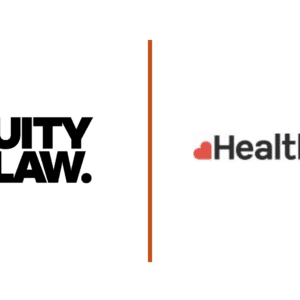HMRC gets Flexible – HM Treasury’s Coronavirus Job Retention Scheme Direction
Key Contact: Claire Knowles
Author: Adam McGlynn
Chancellor of the Exchequer, Rishi Sunak, has issued a new direction to HMRC on behalf of HM Treasury under the powers conferred by s71 and 76 of the Coronavirus Act 2020 (the Direction). This direction modifies and updates the original instructions to HMRC, dated 15 April 2020, in relation to their operation of the Coronavirus Job Retention Scheme (the Scheme), providing legal authority for the recently announced “Flexible Furlough Scheme”. Though much of the Direction simply confirms previous government guidance and announcements, it also provides some new, and more detailed, information.
Line in the Sand
There is a definitive break between the Scheme’s original operation and the new flexible arrangements. Though an employee’s furlough leave may continue into July, all claim periods will automatically end on the 30 June so that furlough leave from 1 July will be regulated by the modified framework.
With this line in the sand comes a barrier for any new entrants to the Scheme. Employers will only qualify to make new claims if they are eligible to claim for an employee furloughed under the previous framework, i.e. an employee furloughed on or before 10 June 2020. Similarly, employees will only qualify for further furlough leave if they have already been furloughed under the previous framework and the Scheme rules were complied with. However, paragraphs 11 and 12 of the Direction provide new exceptions to this barrier for ‘Family Leave Returners’ and ‘Armed Forces Reservists’.
New Entrant Exceptions
The Direction provides exceptions to the general barrier to new entrants by including the following cohorts in its definition of ‘Qualifying Employee’:
- Family Leave Returner – an employee who could not be placed on furlough leave on 10 June because they were taking a period of maternity, paternity, adoption, shared parental, or parental bereavement leave in accordance with Part 8 of the Employment Rights Act 1996.
- Armed Forces Reservist Employee – an employee who could not be placed on furlough leave on 10 June because they were called or recalled for service at that time in accordance with the Reserve Forces Act 1996.
Employees within these categories will qualify under the Scheme from 1 July even if they have not been placed on furlough leave in the past. This will also increase the maximum qualifying employee cap included in claims from 1 July, referred to by the Direction as the ‘high-watermark number’.
Whether intentional or otherwise the criteria for qualifying employers is unaffected by this new entrant exception. Therefore, even though an employee may qualify by virtue of these exceptions, an employer may still not qualify under the Scheme if they did not place any employees on furlough leave on or before 10 June.
Furlough Leave Agreements
In the same manner as the Scheme’s original framework employers and employees must agree to the employee being placed on furlough leave, although HMRC will continue to accept written confirmation of this agreement from the employer. Furlough agreements must set out the main terms and conditions under which an employee will not work (their full usual hours) and so may need to be updated to reflect more flexible working arrangements.
Agreements must be made prior to the claim period to which they relate, however, a framework agreement may refer to multiple claim periods so long as the schedule itself is varied when necessary to accurately reflect working/ furlough hours. Where a variation results in an overpayment by HMRC this should be rectified in the employer’s next claim or repaid directly to HMRC if necessary.
Claim Periods
The direction goes into detailed explanation of claim period but adds little to the existing government guidance. Claim periods must lie within a calendar month and must be at least seven days long except for period commencing on the first calendar month day or ending on the last.
The only expansion of note is that claim periods for Family Leave Returners and Armed Forces Reservist Employees may be for fewer than 7 days on their return to work.
Qualifying Costs
Calculation of a qualifying employee’s wage payments is unaffected by the flexible framework and the Direction merely outlines the calculations explained under existing government guidance. For further information on calculating an employee’s usual/furlough hours, or on monthly changes to the maximum Scheme reimbursement, please see our webinar The Flexible Way Forward.
Study and Training
The Direction imposes tighter restrictions on the compatibility of training during furlough leave. This is a logical step for HM Treasury as the flexible nature of the new framework could tempt employers to label all non-working hours as furlough hours, even where they are receiving some other desirable benefit. The Direction, therefore, distinguishes between training which specifically relates to the employer’s business, which are incompatible with furlough leave, and general professional development, which will remain compatible.
For a more general overview of the new flexible furlough scheme and our Frequently Asked Questions please see our Immediate Questions article and our webinar, The Flexible Way Forward. If you would like further advice on how the upcoming changes might affect your business, please contact our employment team.
Claire Knowles – Partner
Mark Alaszewski – Associate
Rebecca Mahon – Solicitor
Adam McGlynn – Trainee Solicitor






